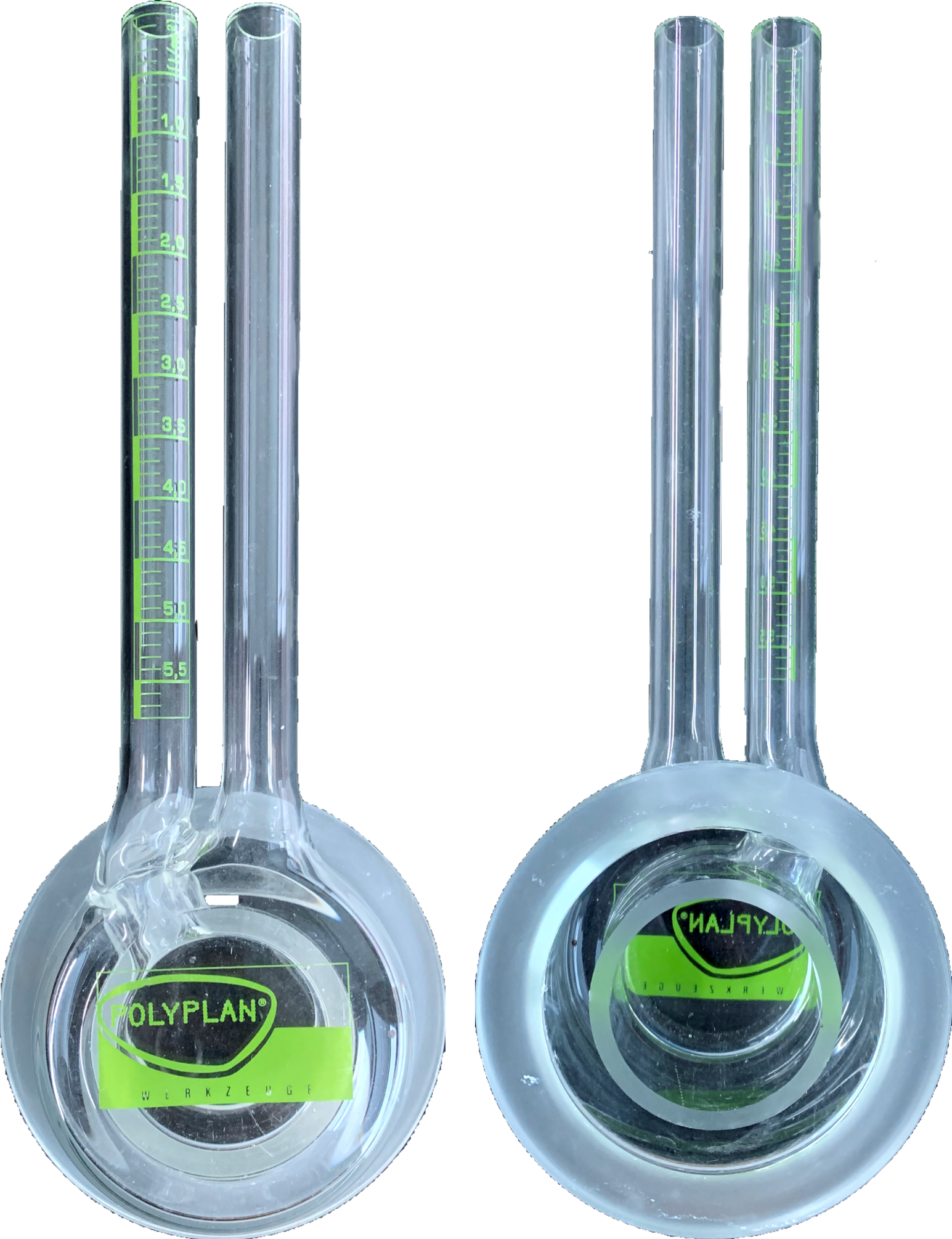Test Tube PLEYERS
Introduction
In both building materials technology and stone restoration, the examination of the absorption of fluids of porous materials is of great importance. In stone restoration, among other things, it provides insights into the material properties and the associated assessment of the weathering behaviour, which in turn is used for the later evaluation of conservation measures. In building materials technology, the investigation of liquid absorption is used, for example, to test the water tightness of exterior walls and concrete, or to assess the penetration behaviour of impregnating materials and their long-term efficiency. The determination of the water absorption coefficient plays a decisive role here. The following section discusses the so-called test tube according to Pleyers as a measuring method for the water absorption coefficient.
Test tube according to Pleyers
The test tube according to Pleyers (Fig. 1) is used to determine the liquid absorption of porous building materials. It was patented in 1999 by Dipl.-Ing. Gerd Pleyers and is based on the Karsten test tube. A disadvantage of the Karsten test tube is that it is not possible to determine the indenter parallel to the surface and thus reliably assess the depth of penetration. The two measuring tubes also vary in their design. The test tube according to Karsten is made of a glass body with a liquid chamber. This is followed by a tube with a measuring scale, with which the amount of liquid absorbed can be read off in ml. Pleyer's test tube, on the other hand, has two liquid chambers, one inside and one outside, both of which are connected to a respective riser tube. Only the riser tube connected to the inner chamber has a scale in l/m2. The inner chamber is used to test the surface of the building material, while the outer chamber enables the cylindrical spreading of the liquid in the inner chamber. It is important that the outer chamber is filled with liquid the entire time, otherwise the liquid in the inner chamber will not spread one-dimensionally into the test object, as in the Karsten test tube. This device enables an exact, directly readable determination of the water absorption coefficient.
The tube is available in different alignments depending on the surface to be examined. The Pleyers tube is available in vertical and horizontal alignments.
Procedure and measurement
For the execution on a building material surface, the glass edges are first sealed with a special kneading putty (e.g. car body sealant Teroson RB IX). This causes the device to adhere to the building material surface and is intended to prevent the liquid from penetrating outside and inside the two chambers. With the test tube according to Pleyers, there are prefabricated putty strips of a certain thickness to separate the inner chamber from the outer one. When applying the putty, make sure that the correct amount of putty is applied so that the above-mentioned function of the putty can be fulfilled. After pressing the tube against the surface to be tested, the liquid (water) is filled into both riser tubes with a squirt bottle. It is important that the liquid is filled into the rising tube with the scale exactly to the zero point and, if possible, without air inclusions. Only then is the time measured. The values are read off the meniscus of the liquid. Due to the scaling of the rising tube and with the use of the so-called Wurzel-t law, it is possible to determine the water absorption coefficient after just 15 minutes. For this purpose, the read value of the water quantity after a quarter of an hour is multiplied by the multiplier two.
